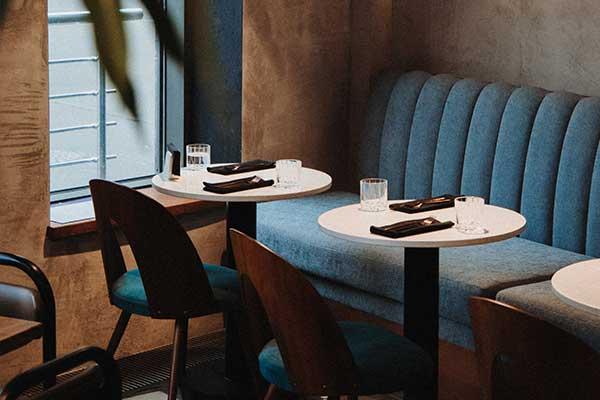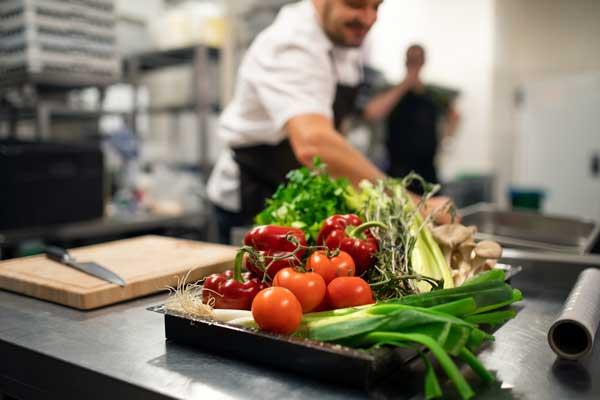Do you regularly suffer from no-shows? Here's how to tackle them!

We all recognise it by now: customers are less likely to make reservations, often cancel a table, or turn out to be a no-show. In a series of blog posts, we will explain how you can prevent these things from happening, but also how you can maximise your table capacity by making proper use of the Resengo tools designed for this purpose.
Hospitality businesses face no-shows almost every day. When guests make a reservation and then don't show up, this causes major frustrations for restaurant owners, as last-minute changes often incur high costs, without the revenue from the reservation. Avoiding no-shows is increasingly becoming a priority. This is why we would like to give you some insider tips to deal with no-shows in your restaurant.
What is a no-show?
A no-show is someone who makes a reservation and then decides to simply not show up without cancelling, often even after they have given an additional confirmation. It affects all sectors, including the hospitality industry. In other sectors, we see many solutions that work, such as asking for a deposit or booking confirmation.
How much does a no-show cost for a restaurant owner?
One in five restaurant reservations is cancelled at the last minute or turns out to be a no-show. This phenomenon costs restaurant operators handsomely.
You schedule your staff based on the number of reservations. In addition, you have also adjusted the stock of ingredients to these expectations. With a no-show and cancellation rate of 20%, the costs quickly add up.
The effective price of a no-show depends on several aspects and is therefore different for each restaurant. For an average restaurant, the loss amounts to several thousand euros a year. That is far too much simply ignore!
“Roughly speaking, we have two reservations every week that turn into a no-show. For a table of two, we easily lose around €500. Not only do we lose turnover because of these no-shows, we have too many staff and we can't make guests on the waiting list happy. This in turn ensures that the waiting list no longer has any real value.”
Jonas Kellens, Dim Dining

Why register no-shows?
By registering no-shows in your restaurant yourself, you will know perfectly which customers regularly fail to keep their appointments. You get a better understanding of how and when these no-shows occur and a notification when a no-show customer wants to make a reservation again.
Based on this data, you can then implement measures that reduce the likelihood of no-shows. For example, you can choose to refuse these reservations or follow up personally. In addition, you can accurately monitor and adjust the impact of your prevention measures and make the right choices.
Registering no-shows is definitely the basis of a successful approach against no-shows and late cancellations and our no. 1 tip to start with!
Can you build awareness among your guests?
Guests do not always seem to realise that their behaviour costs the hospitality business a lot of money. For example, some people make a reservation in 2 or 3 restaurants and choose at the last minute which one they fancy most. The other reserved restaurants all end up with an empty table.
Why guests find it easier not to show up than to cancel is unclear. In most cases, guests do not realise that for restaurants, that cancellation makes the difference between an empty table or calling someone on the waiting list.
So raising awareness is definitely in order. Most people will understand your situation if you give them a better understanding of the consequences of their no-show.
What other measures can you take to prevent no-shows?
Using a cancellation policy
Cancellation policies are a written set of rules you apply to reservations, cancellations and no-shows. This is a first step to avoid empty tables.
As a Resengo customer, you can use our general terms and conditions offered by Resengo. These conditions contain all the info you need, including a paragraph on cancellation conditions.
Using these terms, you can also take other precautions.
Asking an advance for reservations
More and more restaurants ask for a deposit when booking a table. This deposit can be made via direct bank transfer, but you can also opt for a credit card guarantee.
Of course, you deduct the amount paid as a deposit at checkout. Do you work with a credit card guarantee? Then no money changes hands and you release the reserved amount when the guest arrives.
You can easily customise the advance payment settings in the settings of the Resengo reservation system.
“Since a few weeks, we have been asking for a deposit for reservations on Friday and Saturday from four people and up. Since then, we have not yet had a table whose party did not show up after paying a deposit. We can also filter out people who make reservations at two or three restaurants and then decide very last minute where they will eat. We feel there just needs to be a mindset switch.”
Tim Van den Heuvel, Mission Masala
Working with a reservation confirmation
Reservation confirmations are a good way to remind guests with reservations of their appointments.
Some restaurants choose to call all their guests one by one, to confirm their appointment. An effective but time-consuming task!
It can also be easier.
You send them a reminder via e-mail or text message. To confirm the reservation, your guest has to reply to your message. Don't get a reply? Then you can give away the reserved table to another guest.
Setting up a reservation confirmation is also easily done in the Resengo Admin.

Using last-minutes to fill empty tables as a last resort
Tables that are vacated the same day, unlike effective no-shows, are not always lost seats.
A no-show means pure loss, because during a busy service, who has time to bother with promoting an empty table?
Een annulering, daarentegen, kan perfect omgevormd worden in een last-minute.
A cancellation, on the other hand, can be perfectly transformed into a last-minute.
By making smart use of your marketing channels, you can still sell this last-minute table to other foodies.
Thanks to Resengo's automation tools, you can promote a table in just a few clicks:
- Change the table's status to ‘last minute’
- Optionally add a small gift to the table, such as a free appetiser
- The last-minute table is automatically published on
- The Resengo.com last-minute page
- Your Facebook page
- Yeat (if you use this service)
- BookTable (if you use this service)
That way, you have a pretty good chance of still filling those free seats in your service, you surprise a guest and your staff are not twiddling their thumbs.
Allow yourself the ease of Resengo
Try Resengo for free and discover why it is the perfect platform for your business!

